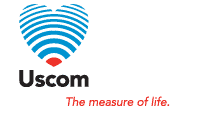Uscom Evidence
Uscom maintains a reference of all current evidence supporting Uscom's products.
For a full list of all evidence see All Evidence
Bhaskar Sai Vardhan, Manisha Kar Sushil Chandra Mahapatra
Published: Indian Journal of Community & Family Medicine | Vol. 4 | Issue 01 | Jan-Jun, 2018
Introduction: India is burdened with 25% of cardiovascular disease-related deaths. CHD manifests almost 10 years earlier on an average in Indian subcontinent. Objectives: to study the early onset atherosclerosis in young, asymptomatic individuals using physiological parameters.
Material & Method: 31 young, asymptomatic males of age group of 21- 40 yr participated in this cross-sectional, observational study. The basic characteristics and anthropometric measurements of the subjects were obtained. Baseline blood pressure was recorded and Mean Arterial Pressure (MAP), pulse pressure (PP) were calculated. The arterial stiffness was assessed by recording central systolic blood pressure (central SBP), central diastolic blood pressure (central DBP) and augmentation index by arteriography. Ankle-brachial index was also measured. The data were presented as median (range).
Results: 31 male subjects of 21-40 years of age participated in the study. Participants were grouped into lower age group [group A (21-30 yr), n=14] and higher age group [group B (31-40 yr), n=17]. More subjects (71.14%) of group B were in overweight-pre-obese-obese group than in group A (64.69%). Considering waist-hip ratio (WHR), more subjects of group A (94.11%) had low estimated health risk than group B (85.71%). Interestingly, SBP of 11.8% and DBP of 5.9% subjects of group A were higher, but none had higher SBP and DBP in group B as per JNC 8 criteria. The lower limit of central SBP and DBP were slightly more in group B than group A. Augmentation index value was within normal range in both groups. Ankle Brachial Index (ABI) of 14.3% of subjects of group B was indicative of mild to moderate degree of peripheral vascular disease.
Conclusion: The important findings in this study have significance in practice as atherosclerosis eventually leads to serious consequences such as an MI or Stroke.




